There are several upselling examples restaurant owners, managers, and other employees should be aware of, as they allow restaurants to boost key performance metrics like average revenue per customer and increase the overall revenue generated by the business. In this guide, you can learn about 12 of the most important upselling strategies.
Table of Contents:
- What is the Restaurant Industry?
- What is Upselling?
- Why is Upselling in Restaurants Important?
- 12 Restaurant Upsell Tips and Examples
- Start With a Friendly Discussion
- Create an Upselling-Focused Menu
- Recommend Additions to Chosen Menu Items
- Think Carefully About Your Menu Layout
- Offer Wine Options and Pairing Recommendations
- Make Effective Use of Technology
- Consider Making Use of Samples
- Train Your Waiting Staff to Read the Signs
- Upsell the Drinks in Your Restaurant
- Understand Your Own Profit Margins
- Make Strategic Menu Changes During the Year
- Know When You Need to Back Off Too
- The Pitfalls of Restaurant Upselling
- Everything to Know About Restaurant Management
- All About the Latest Restaurant Technology
- A Complete Overview of Restaurant Marketing Trends
What is the Restaurant Industry?
Before examining the key upselling examples, restaurant staff should know about what the restaurant industry is and how it is defined. Most accepted definitions distinguish restaurants and food service businesses, with the word restaurant meaning an establishment where food is prepared on-site and where customers have the option to eat their chosen meal within the restaurant premises.
The restaurant industry, therefore, is the industry that encompasses all of these business types, from fine dining restaurants, to fast food establishments, cafes, and even some pop-up businesses.
In the “Restaurant Industry: Overview, Types, Examples, and More” guide, you can read a complete definition of the industry, learn about different restaurant types, and access other vital information.
What is Upselling?
It is also important to be clear on what upselling is before exploring some important upselling examples restaurant workers should familiarize themselves with. Upselling can be briefly described as convincing a customer to purchase more expensive products, which are also comparable to what they initially want to buy.
Within a restaurant, it typically means convincing a customer to purchase a more expensive meal or drink than what they initially intended. This could involve encouraging them to upgrade to a large menu item instead of a medium or small menu item, or it may involve encouraging the purchase of extra toppings on a pizza, or extra items on a burger. It could also involve convincing them to buy an entirely different, more expensive meal.
The term ‘upselling’ is often used in combination with ‘cross-selling‘, which is technically slightly different. While upselling aims to encourage customers to make higher-end purchases or upgrades to their chosen purchase, cross-selling is a process that focuses on selling additional items beyond what the customer initially wants. However, both upselling and cross-selling are ultimately designed to increase revenue earned from each customer.
Why is Upselling in Restaurants Important?
Upselling ranks high on the list of valuable restaurant management tips, because it allows restaurants to optimize earnings. However, many of the upselling examples restaurant staff deploy are mutually beneficial, because they result in the restaurant earning more money and the customer receiving a better quality meal.
When waiting staff within the restaurant get good at upselling, and when it is used carefully, in the appropriate moments, it can be viewed as good customer service. After all, it helps to inform customers about the best quality menu items. Upselling is also often much more cost-effective than other revenue-boosting strategies.
12 Restaurant Upsell Tips and Examples
In the sections that follow, you can learn about some upselling examples in restaurant businesses and access some valuable restaurant upsell tips that will help you boost revenue generation.
1. Start With a Friendly Discussion
Many of the best upselling examples restaurant businesses can learn from begin with a short, friendly discussion. Encourage waiting staff to approach diners, and ask them whether they have visited before and whether they have any ideas for the type of food they would like to eat. Establishing a rapport early on can be extremely valuable.
These initial interactions can put customers at ease and make it more likely that staff will succeed with their upselling efforts. During these preliminary discussions, restaurant staff must be friendly and knowledgeable, so that customers respond positively and feel confident in any suggestions or recommendations they make.
2. Create an Upselling-Focused Menu
Many restaurants make the mistake of thinking that upselling is purely an activity for customer-facing staff to handle. Still, a lot of the work can potentially be done for these staff if the menu is carefully crafted. A good starting point is to allow items on the menu to be customized, so that customers can add toppings of their choice.
You could put different size options on the menu, so that staff can recommend upgrading to large or super-sized meals. It can also be a good idea to highlight meals that are popular with customers and that are highly profitable. These could be marked on the menu as chef’s signature dishes, or as popular dishes with your customers.
3. Recommend Additions to Chosen Menu Items
Some of the most obvious upselling examples restaurant staff can learn are related to making recommendations for additions to items ordered. For example, if a customer orders a burger, you might be able to recommend extra fillings, and the same applies to pizza toppings. With certain dishes, you could recommend adding cheese, a sauce, or a dip.
One of the best restaurant upsell tips is to include additions to the menu or your food ordering system and highlight the customization element. Customers are more likely to make high-end purchases if they feel in control. Of course, restaurant staff should encourage this line of thinking and make friendly suggestions, without being pushy.
4. Think Carefully About Your Menu Layout
Think about some of the upselling examples restaurant businesses have used with you in the past, and you will notice that the menu plays a key role. Upgrades or additions are usually placed underneath the menu item, or at least on the same page. Items that are commonly paired are usually also listed together, so that restaurants maximize sales.
Positioning items or options in the right place on the menu can do a lot of the work for you, tempting customers into higher-value purchases right off the bat. When customers see upgrade options or extras on the menu near their chosen item, they will also find your verbal upselling efforts less jarring.
5. Offer Wine Options and Pairing Recommendations
Wine can be one of the best ways to maximize profits in a restaurant, but you can also use wine for upselling purposes too. One of the most effective upselling examples restaurant leaders can learn from is making recommendations for pairing different types of wine with different dishes from the menu. This shows a level of care and attention that will impress customers and make it more likely that customers will order wine with their meals.
You can also upsell the wine itself, by recommending higher-end wine bottles when customers order lower-price wine, or by selling different size options, such as a large glass, or a bottle.
Restaurant Training: Sell More Wine. Teach Your Waitstaff to Suggest Wine More Effectively
6. Make Effective Use of Technology
Some of the upselling examples a restaurant can make the best use of involve deploying technology effectively. Restaurant management systems allow you to gather valuable data about customer preferences, and this could be used to personalize service and make recommendations that are most likely to be successful.
A QR code ordering system could be deployed, allowing customers to make additional orders even after placing their initial order. This can be especially great for situations where customers still feel hungry after their meal, or when they see another member of their party’s food and decide they want to try it too.
7. Consider Making Use of Samples
It may be worth experimenting with samples, to convince customers to order more food. Some upselling examples restaurant staff can benefit from are all about tempting customers who are close to ordering a certain item. When staff can sense this, giving them the power to offer samples could help to seal the deal.
There is a balancing act here, however, as you want to avoid offering samples of items that are unlikely to convince people to place an order, as this just wastes ingredients. In general, dessert samples are good, because they can tempt customers who are on the fence, while wine is another solid option. Some starter menu items can also help convince customers to order a starter and a main course, rather than skipping straight to the main course.
8. Train Your Waiting Staff to Read the Signs
Ultimately, upselling is a skill that needs to be learned and worked on. You should spend time working with your waiting staff and teaching them how to read the signs your guests are open to upselling.
If guests display clear signs of wanting to eat more or being indecisive, these situations present an opportunity to intervene and attempt to upsell. Similarly, if guests indicate they want to keep their spending down, aggressive upselling efforts will likely fail and may result in a worse customer experience. With hotel restaurant management, there may be repeat customers and more time to build up a sense of whether upselling will be effective.
9. Upsell the Drinks in Your Restaurant
There are plenty of upselling examples in restaurant businesses that are focused on drinks, rather than food. If a customer orders a standard drink, you could ask them if they would prefer to upgrade to a large one. If they order a relatively cheap house wine, you could ask if they would prefer a more expensive, branded option.
However, there are lots of other little tricks to consider, too. Restaurants should provide tap water for free, but not every customer likes tap water. You might be able to upsell by charging them for bottled mineral water, flavored water or sparkling water instead. With spirits, you could recommend upgrading from a single to a double shot.
SELLING MORE DRINKS | RESTAURANT TIPS & TRICKS
10. Understand Your Own Profit Margins
Every restaurant operates with different profit margins on different meals. In general, one of the best restaurant upsell tips is to focus on the items that provide the biggest profits. After all, upselling items with a smaller profit margin will provide less of a benefit to your financial results.
This is not to say you should avoid upselling low-profit margin items. Ultimately, any upselling of items that deliver a profit will help. However, your upselling efforts can be optimized by focusing most of your efforts on those higher profit margin items. Sometimes, upselling just one of these items could be equivalent to upselling many other items on the menu, so try to get to grips with which items are most beneficial to upsell.
11. Make Strategic Menu Changes During the Year
A highly effective way to upsell to restaurant customers is to make strategic additions to your menu at certain times of the year. For instance, it may be relatively easy to upsell using a high-end Christmas menu in December. Customers who were planning one order could be convinced to order something more expensive and festive.
A similar strategy can be used at other key times during the year, such as around religious festivals, holidays, or special events. You may even be able to introduce special versions of regular menu items and sell them on a limited edition basis, to drive up demand and provide customers with a fear of missing out.
12. Know When You Need to Back Off Too
In addition to the various upselling examples restaurant staff can use to their advantage, it is equally important to understand when to back off and stop upselling. This primarily comes with communication and customer service skills and requires an ability to read body language and interpret customer moods.
At its best, upselling is mutually beneficial, but at its worst, it can feel frustrating, annoying, or even intimidating. While upselling can be great for restaurant revenue management, it should never occur at the expense of a positive customer experience. All customer-facing staff need to be taught to use emotional intelligence to know when to back down.
The Pitfalls of Restaurant Upselling
Aside from the aforementioned upselling examples that restaurant staff should learn, it can also be valuable to avoid some common pitfalls. Perhaps the single biggest no-no when it comes to upselling is to avoid being overly aggressive in your pitches. You want to make friendly suggestions, rather than overt sales pitches.
It is important to be subtle. You should not attempt to upsell to every single customer on every menu item they consider. Pick your battles wisely and focus on situations where upselling feels natural and helpful. Remember, good upselling is mutually beneficial, so try to avoid upselling in ways that feel unfair to customers.
Similarly, you should always ensure you are upselling based on quality and positive dining experiences. Never upsell low-quality items and avoid deceiving customers in any way. Your upselling should be about making informed and strategic recommendations rather than simply trying to extract as much money as possible by any means necessary.
Everything to Know About Restaurant Management
The upselling examples restaurant staff need to know apply to employees and restaurant managers alike. The role of the restaurant manager is vitally important, because managers oversee operations, establish expectations within the business, take responsibility for overriding strategies, and manage employees’ needs.
In the “Restaurant Management: Everything You Need to Know” guide, you will have access to the information you need to know about restaurant management, including details of the core responsibilities and education requirements, the personal qualities that will lead to success, and information on restaurant management software.
All About the Latest Restaurant Technology
In addition to learning from the upselling examples restaurant experts highlight and the restaurant upsell tips provided in this article, optimizing your restaurant operations relies on technology. Some of the key tech trends to be aware of include the use of cloud-based point-of-sale systems, QR codes, and restaurant chatbots.
The “Latest Restaurant Technology Trends You Need to Know About” guide will provide a complete overview of the key restaurant technology you should be aware of and the latest trends in the industry.
A Complete Overview of Restaurant Marketing Trends
Some of the upselling examples restaurant owners and senior figures need to know about are directly related to marketing. However, your restaurant marketing strategy needs to go further, as you will need to expand brand awareness, enhance your reputation, promote new dishes and special offers, and attract more customers.
Read the “Important Restaurant Marketing Trends to Follow in 2023” guide for a comprehensive breakdown of the most important restaurant advertising and restaurant marketing trends right now.
Upselling can be a highly effective way to maximize revenue and profits, and the tips provided should help you achieve this. Many of the upselling examples restaurant workers can gain the most from are relatively simple strategies, but they need to be learned, practiced, and used at the right moments.
More Tips to Grow Your Business
Revfine.com is the leading knowledge platform for the hospitality and travel industry. Professionals use our insights, strategies, and actionable tips to get inspired, optimize revenue, innovate processes, and improve customer experience.Explore expert advice on management, marketing, revenue management, operations, software, and technology in our dedicated Hotel, Hospitality, and Travel & Tourism categories.
This article is written by:
Hi, I am Martijn Barten, founder of Revfine.com. With 20 years of experience in the hospitality industry, I specialize in optimizing revenue by combining revenue management with marketing strategies. I have successfully developed, implemented, and managed revenue management and marketing strategies for individual properties and multi-property portfolios.

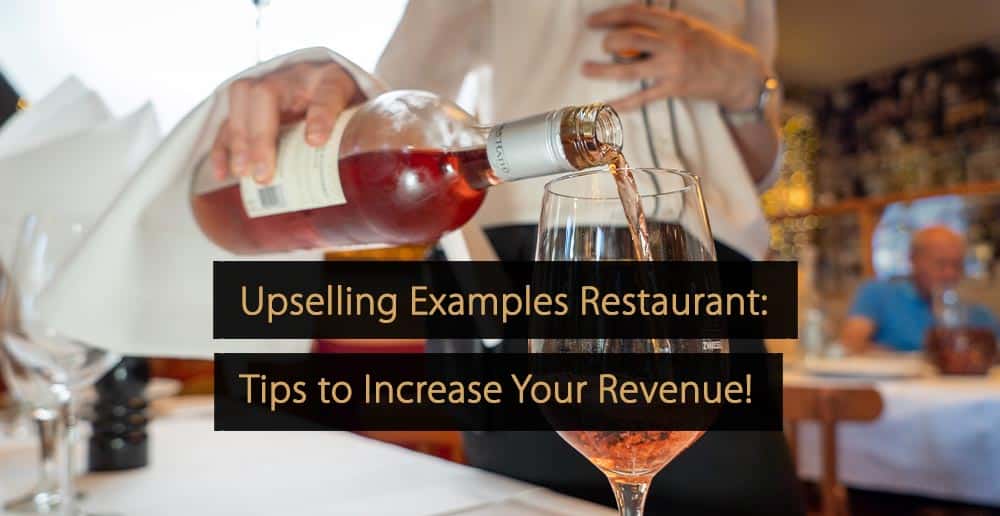
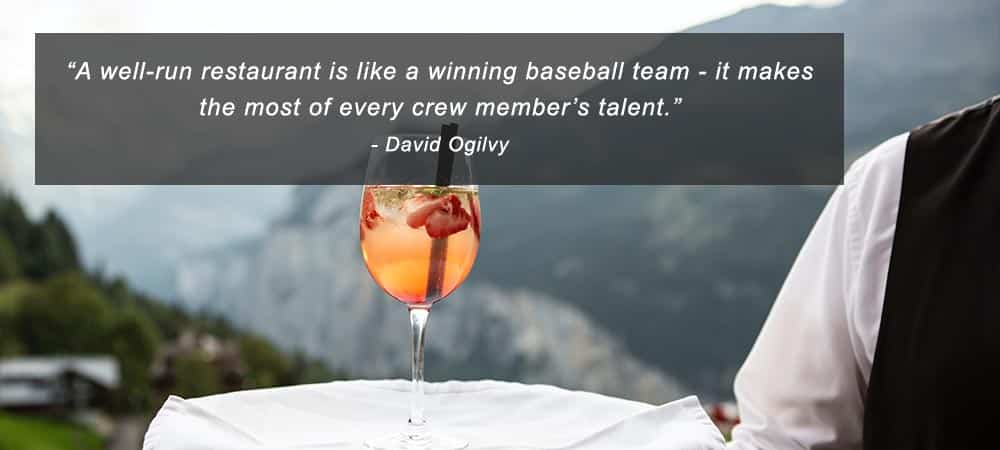




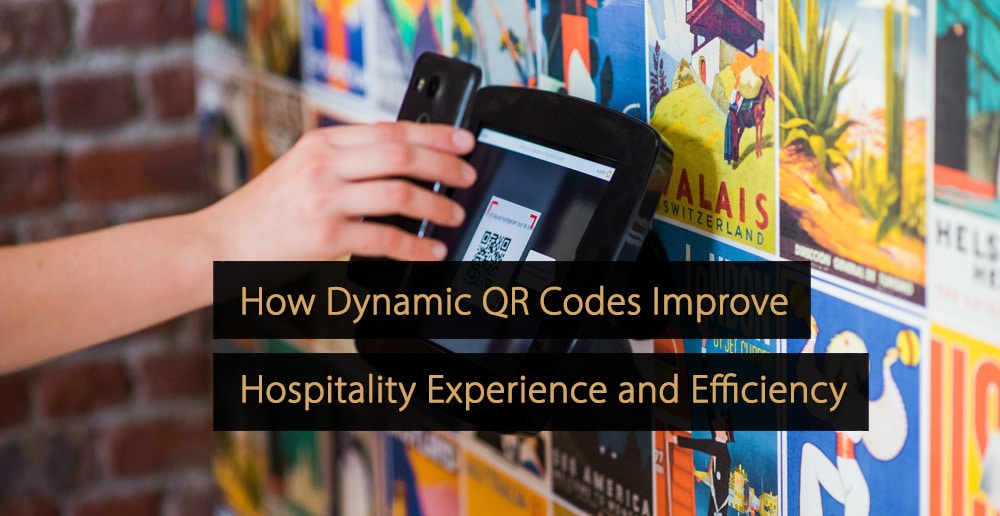
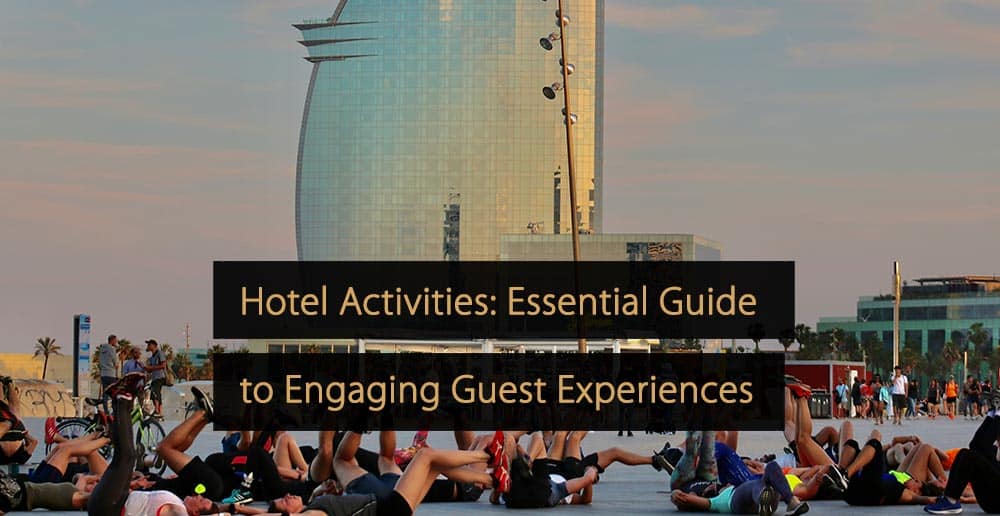
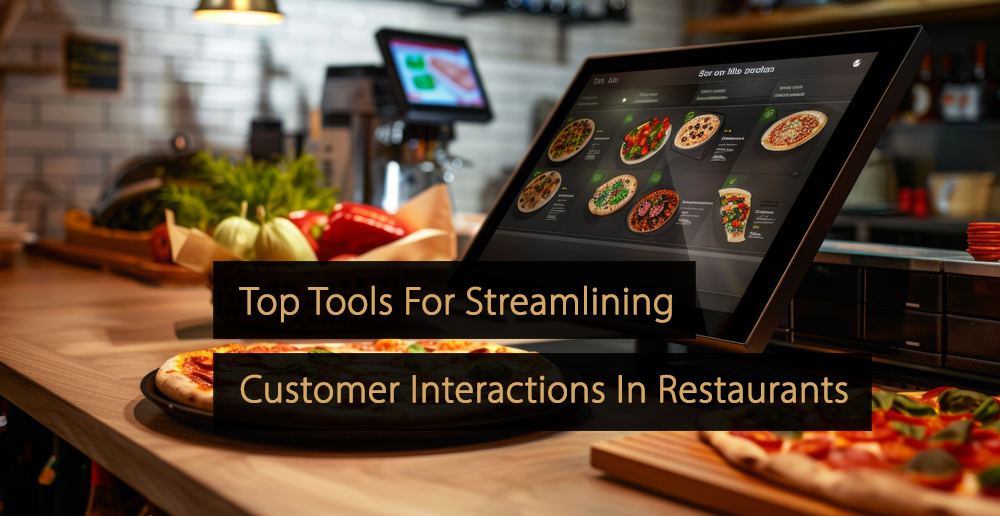
Leave A Comment